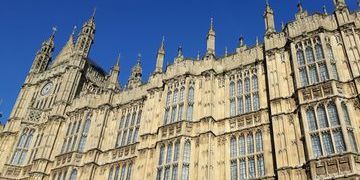Andy Westwood, Associate Vice President of Public Affairs at the University of Manchester, discusses CaSE’s seminar at Manchester’s Policy Week
‘Is the world flat?’ A question from Manchester policy week
16 Nov 2015
To many onlookers, a ‘flat cash’ settlement in the forthcoming Spending Review would be a pretty good result for UK science. They may be right, in the context of a worryingly tight fiscal round, that it might be. But there are many – particularly in UK science – who think it would be a disaster.
This was the context for a seminar held by CaSE at the University of Manchester’s Policy Week earlier this month. Speaking alongside Naomi Weir of CaSE, Graeme Reid of CaSE and UCL, Andrew Miller, former Chair of the Science and Technology Committee and Andrew Jones of AstraZeneca, we discussed what we thought might happen in the Spending Review, why we thought it would happen and what that would mean for science over the longer term.
There is little doubt that some think ‘flat cash’ would be bad news and anything less a disaster. Many expect a significant degree of ‘tucking in’ too – folding in of new areas of science and research activity and expenditure into the ringfence. Brian Cox and others think both would be pretty bad news. Doug Kell, former CEO of BBSRC, thought it would be the end for UK science in any meaningful international sense. Naomi Weir reminded the audience that CaSE began its life as a campaign to ‘Save British Science’ during the 1980s.
So what is the Treasury’s Spending Review process and what are the sector’s prospects? As ever there is good news and bad. The bad is that it’s a tough spending round. Incredibly tough. Tougher than in 2007 (when the first ‘flat cash’ settlement was delivered), tougher than in 2010 when the Coalition Government came to power and tougher than in their mini Spending Review in 2013/14. This is because Government has to save or cut at a greater level than each of those times – some 25-40% on top of the savings already made in the last Parliament.
The better news is that the Treasury is supportive of science and innovation. They see its benefits, particularly in a macroeconomic model that prizes productivity and economic growth. So they ‘get it’ in the way that they get other policy areas, largely through the lens of the economy and through their management of public spending. As with other spending decisions, it goes something like this: Does it help us politically and economically? Will someone else pay for it? Or at least some of it? And is money spent here better value than money spent elsewhere?
For science and innovation, the answer tends to be that it helps economically, slightly less obviously politically, someone else – usually the private sector – will pay for some but not all of it and all bets are off as to whether Government would prefer to spend its shrinking resources on science as opposed to say the NHS or schools. In other words this isn’t just a question about whether funding science and research is a good idea, or justified economically, it’s a question about whether Government might find a better argument elsewhere.
My working assumption – and I could easily be wrong – is that the outcome will be to maintain (more or perhaps slightly less) the ‘flat cash’ settlement that we have seen over the last three Spending Reviews. However, it is likely to come with at least three caveats: 1) ‘tucking in’, 2) greater efficiency and 3) more measurable economic impact.
The ‘less’ element looks likely to be a contraction of ‘close to market’ innovation spending with the Financial Times reporting a likely conversion of direct funding to soft loans. That shift might well cause the precise amount of spending on science and innovation to fall a little overall. Much less predictable will be the funding of QR and the architecture that delivers it. Whilst the recent Higher Education Green Paper has reaffirmed a commitment to the dual support system, it is much less clear how this will work in practice. Especially in a way that isn’t more vulnerable to the occasional ministerial shift in priorities.
The death of industrial policy has been widely reported – and it appears that Sajid Javid in particular isn’t a fan. He is more Thatcher than Heseltine in his approach and there’ll be no intervening before meal times. Some in pure science may not be unhappy about that – but both Javid and BIS may still be keen on market principles even if not market interventions. Competition for Government’s research and capital funding will be seen as a good thing as too will be competition for private sector investment.
In the end all of this might still add up to a win of sorts. Compared to public spending in other sectors and possibly also to the rest of further and higher education, it almost certainly will be. The Treasury are unlikely to find better value elsewhere.
But we should take note that there is a broader rolling back of the state in progress and that this is likely to go on for the next decade, depending on how optimistic we might be about Labour’s long term electoral prospects. The size and reach of the state is likely to change quite rapidly. Behind the spending headlines there is a philosophical reworking of what the state does and what it pays for. Put simply, it will do less and spend less and science and innovation will not be exempt.
Government will expect to stimulate or lever in more spending on science and innovation especially from the private and philanthropic sectors. It will try hard to find new means with which to do so. The policy prize will be to incentivise more science and innovation investment taking place beyond the borders of Government funded science. This will be a key objective over the longer term and policies like match-funded capital spending, R&D tax credits will play a part. So the Government’s objective will be to increase the proportion of our GDP spent on science and innovation, but to see a lower share coming directly from them.
That will take them deeper into the territory of reforming R&D tax credits, extending programmes like the UK Research partnership investment fund (UKRPIF) and the Science and Innovation Audits – the road maps or prospectuses that will set out where government funding for world class science can have maximum economic impact and trigger hitherto unseen levels of private investment. Some are optimistic about that agenda. Andrew Hughes of AstraZeneca thought this was the territory and thinking that we were moving into and that it was time to get on and do it.
It means that we will have to start talking about science and funding in rather different ways. Rather less about transactions between science and the state and rather more about how Government money might trigger more funding from elsewhere. About how Government is able to create more competition for private and charitable investment too. In other words, more of a market for science and innovation.
I expect that this might fill many with horror. Governments have tried to do this before and, more often than not, they have failed. But despite this history, I expect them to try again because this Government has a strong, perhaps unshakeable, faith in the private sector, in markets and in competition. So too does the Treasury and this might well be the price for any longer term growth in science funding. Ironically this may be part of their argument for continuing to provide sizeable public funding in the short and medium term – as a way of incentivising more investment from elsewhere. Without this faith in the economic contribution of science, the alternative might be for them to spend less or to be more easily persuaded that spending on other things might be better. And that would be really bad news.
Related resources

CaSE’s comprehensive analysis of the measures that impact R&D announced in the 2025 Spending Review

CaSE’s response to the House of Lords Science, Innovation and Technology Select Committee inquiry into: Financing and Scaling UK Science and Technology: Innovation, Investment, Industry.

DSIT published plans to provide long-term public funding for certain R&D activities. Policy Officer Edmund Derby looks at what has been proposed.

CaSE analysis of Government Expenditure on R&D (GovERD) statistics for 2023.